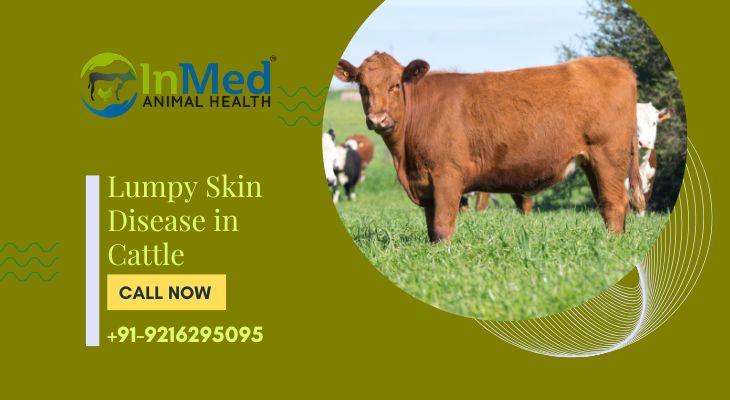




Lumpy Skin Disease in Cattle
Lumpy skin disease is a serious viral condition that can cause mortality in cattle and significant abortion rates in pregnant cows. Although some strains of the disease are not generally dangerous, others can be fatal. Vaccinating calves against lumpy skin disease and maintaining good biosecurity practices can help protect your herd from outbreaks of the disease.
Lumpy skin disease is a serious and often fatal condition that affects red and white breed cattle. The virus, Capripoxviruses, is spread through contact with other infected animals, from wounds, insect bites, and contaminated objects such as water troughs and feed troughs. Management practices such as housing animals densely in areas where the risk of contracting lumpy skin disease increases is thought to be one of the main causes of outbreaks. In general, it can affect any breed of cattle with little or no immunity to the disease. There are several different strains of lumpy skin disease which vary in severity and treatment options. It’s important that you understand the signs, causes, treatments and prevention methods for this condition in your herd to avoid a potential outbreak.
Lumpy skin disease is a highly contagious and fatal viral disease that affects cattle. The disease mainly affects cattle’s skin, udders and lymphatic vessels in the neck and hindquarters. It’s transmitted through contact with other infected animals or contaminated objects such as water troughs and feed troughs. Management practices such as housing cattle in areas where this disease is more likely to occur are thought to be one of the main causes of outbreaks. The disease is caused by a poxvirus, capripoxvirus, that is different from the genus Orthopoxvirus, which is a type of poxvirus that infects cattle and other animals.
Lumpy skin disease is caused by a virus that primarily infects cattle and sheep. The virus can be transmitted through direct contact with an infected animal, contaminated objects such as water troughs, feed troughs and through bites from insects such as mosquitoes, ticks, and flies. Some calves can also be born infected with the virus. Cattle with little or no immunity to the disease are most susceptible to contracting lumpy skin disease. The incidence of the disease is higher in warm, humid weather.
The exact causes of LSD disease are not well recognizable. There are several factors that can increase your risk of contracting the disease. Some of those factors include-
It is a viral disease with fever, runny nose, watery eyes, salivation, soft blister-like nodules all over the body. Also there is reduction in milk yield and difficulty in eating. The infected animals also start losing weight due to the disease.
Infected animals also have scabs on their udders that tend to be purulent, or have a runny, yellowish-green substance. There may also be swelling around the udder, which is caused by lymphatic congestion. Cattle with the disease will often have enlarged lymph nodes in their neck, above the collarbones. The most common symptoms associated with lymphadenitis are pustules or localized bumps on the neck and hindquarters. These will be small, pinkish-red bumps, sometimes with an open centre. They’ll also have scabs on their hindquarters and are likely to have swelling around the lymph nodes in their neck.
Nonspecific symptomatic treatment (antibiotics, anti-inflammatory drugs and vitamin injections) is usually administer at treating the secondary bacterial infections, inflammation and fever, and improving the appetite of the animal.
There’s no cure for this disease, but you may be able to treat the symptoms of the disease. The first thing to do when treating your animals is to avoid spreading the disease. Make sure that you clean and disinfect any objects that have been in contact with infected animals. You can treat the pustules on the udder with disinfectants, like iodine. If the scabs on the udder haven’t crusted over, you can remove them with a disinfected knife or disinfected tweezers. Be sure to wear gloves when treating udder and avoid getting the pustules or scabs on your hands. You can also treat swelling around the lymph nodes with a warm compress.
However, the disease is curable in calves that are less than three months old. Veterinarians may use blood serum from an infected calf as an injection in the unweaned calves. The serum contains antibodies that fight off the virus. If a calf is weaning, the virus is difficult to eliminate. Keep in mind that once a calf contracts lumpy skin disease, it will be susceptible to contracting it again at a later date.
There are a few things that you can do to reduce the risk of contracting this disease to other animals-
Management practices such as housing animals in areas where this disease is more likely to occur are thought to be one of the main causes of outbreaks. There are several different strains of LSD disease that vary in severity and treatment options. It’s important that you understand the signs, causes, treatments and prevention methods for this condition in your herd to avoid a potential outbreak.